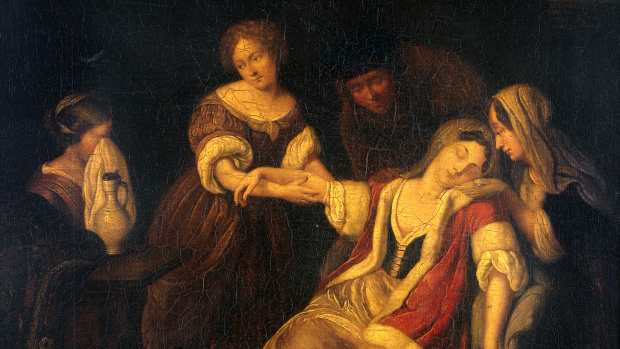The Story of Hansel and Gretel: Summary, Symbolism, and Interpretations
Hansel and Grethel
Hansel and Gretel (sometimes Grethel) is a famous fairy tale from the collection of brothers Grimm. It has an amazing history and offers many astonishing interpretations.
We'll start with short summary and slowly delve into its rich symbolism. Hansel and Gretel is an old story with always fresh messages talking about our deepest fears.
Fill your pockets with some nice white pebbles, take a piece of bread and come with us in the deep deep woods!
(Image credit: Hermann Vogel; all used illustrations are in the Public Domain)
Short Summary
There is a great famine in the country, and the woodcutter's family is starving. His wife suggests taking their kids (they are his and his late first wife's children) into the woods so they would have two hungry mouths less to feed.
After some hesitation, he agrees, and they leave the kids in the woods. Hansel and Gretel heard about the plan and returned home thanks to the stones Hansel was using to mark the path. But at the next attempt, Hansel couldn't load his pocket with stones because the doors were locked. Instead of stones, he used bread crumbs, but they were eaten by the birds, so the woodcutter and his wife succeeded, and the children were lost in the woods.
They find a mysterious hut made of sweets. There is a witch living inside. She is a cannibal and intends to eat them.
But they are too lean, so she decides to feed Hansel first, using Gretel as a slave, and for some time, the children manage to postpone their tragic end. The witch has very poor sight, so she is checking Hansel's fat by pinching his finger. Instead of the finger, he gives her a chicken bone, which postpones his death for a few days.
Finally, the witch prepares an oven and plans to bake both kids. Fortunately, Gretel outsmarts her and throws the witch into her oven, where she is burned. Kids search the hut, find gold, jewelry and other valuables, and with the help of some birds, safely return home.
Their stepmother died in the meantime, and together with their regretful father, they lived happily ever after.
Recommended
History and Variations
Although Grimm's version is the most popular one, it is far from being the first. Looking at the main theme we can place it in the time of the great famine in the 14th century. It was a time of despair when people often did terrifying things in order to survive.
Abandoned children and cannibalism were two of the most striking ones. It was a time of cannibalism and werewolves. The children were common victims.
Even in the times of Grimm's version, child abandonment due to extreme poverty wasn't rare, but they made some important changes through several versions of Grimm's Fairy Tales.
At first, their parents were real father and mother and they were equally responsible for their actions. Later mother was transferred into the popular role of evil stepmother and the father became reluctant at her idea but helpless due to circumstances.
We must mention the slightly different version of the story of Hansel and Gretel in the collection of Charles Perrault. It's titled Hop O' My Thumb or Little Tom Thumb or Little Thumbling.
There are seven kids (all boys) in this story, and we have an ogre instead of the witch, but the plot is essentially the same, although the second half of the story starts to resemble the story about Jack and the Beanstalk.
In Russia, for instance, we have a variation where the girl is sent to her stepmother's sister, who is really Baba Yaga.
We can easily find more variations all across Europe with different numbers of children and even a Devil instead of the Witch.
Symbolism in Hansel and Gretel
The story about Hansel and Grethel is full of symbols, and they offer numerous explanations. We'll try to briefly explain only a few of them to give you a clue about the impressive depth of this famous fairy tale. Some other symbols, like the forest setting, are explained in this analysis of Red Riding Hood.
- Bread: its representation of life is clear. The scarcity of bread is a direct threat of death. Bread crumbles in Hansel and Gretel show how fragile and insecure is our position.
But looking at the connection of bread with wheat and its life cycle, bread can also be understood as a symbol of resurrection. - White stones: they represent innocence. Ancient Greeks used anonymous voting and the meaning was: not guilty. Analytical psychologists interpret them as children's denial to be changed. They went into the woods to be transformed but white pebbles helped them to come back.
When they lose access to them (stepmother locks the door), there is no way back anymore. - Oven: it is a representation of a womb. It offers a possibility of birth (or, in this case, rebirth) but also death if an already-born person gets back in (refuses to grow up).
Birds - there are numerous mentions of the birds in the fairy tale of Hansel and Gretel.
Boy lies he is looking at the pigeon (can represent home) when they are leaving home, birds eat the crumbs to prevent kids returning home for the second time and a bird leads them to the witch's hut.
A bird's bone is important element helping the kids surviving a few days in captivity.














